Related Research Articles
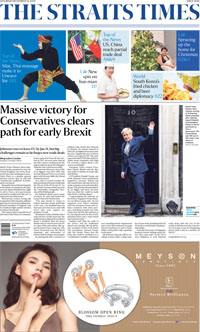
The Straits Times is a Singaporean daily English-language newspaper owned by the SPH Media Trust. Established on 15 July 1845, it is the most-widely circulated newspaper in the country and has a significant regional audience. The newspaper is published in the broadsheet format and online, the latter of which was launched in 1994. It is regarded as the newspaper of record for Singapore.

Sultan Sir Ibrahim Al-Masyhur ibni Almarhum Sultan Abu Bakar Al-Khalil Ibrahim Shah was a Malaysian sultan and the 2nd modern Sultan of Johor and 22nd Sultan of Johor overall. He was considered "fabulously wealthy."
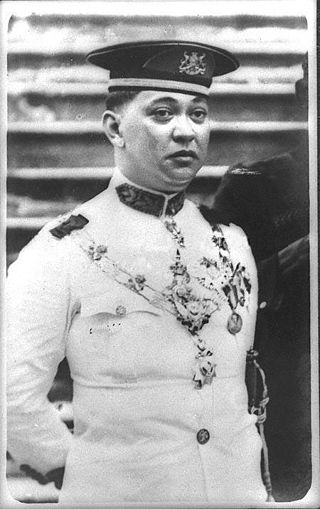
Sultan Sir Ismail Al-Khalidi Ibni Almarhum Sultan Sir Ibrahim Al-Masyhur was the 23rd Sultan of Johor and the 3rd Sultan of Modern Johor.

Mediacorp Pte. Ltd. is the state-owned public media conglomerate of Singapore. Owned by Temasek Holdings—the investment arm of the Government of Singapore—it owns and operates television channels, radio, and digital media properties. It is headquartered at the Mediapolis development in Queenstown's One-north precinct, which succeeded Caldecott Hill—the long-time home of its predecessors—in 2015; as of 2022, Mediacorp employs over 3,000 employees; a large number of them are in both public and private sector broadcasting.

Tan Chong Tee was a Chinese resistance fighter based in Singapore and Malaya during World War II. An accomplished badminton player before the war, he joined Force 136 around 1942 after Singapore fell to the Japanese. In 1944, while on a mission, Tan, along with Lim Bo Seng and other Force 136 members, was captured by the Japanese. He was subjected to torture during his captivity. After the war, he returned to playing badminton and later became a businessman.
Singapore Time (SGT), also known as Singapore Standard Time (SST), is used in Singapore and is 8 hours ahead of Coordinated Universal Time (UTC+08:00). Singapore does not observe daylight saving time.
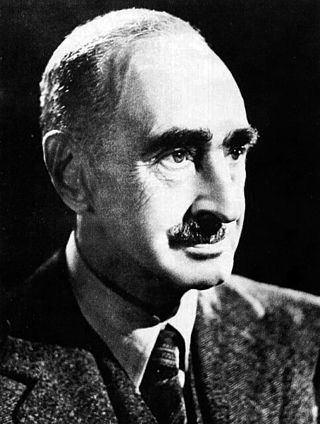
Sir Andrew Caldecott was a British colonial administrator.
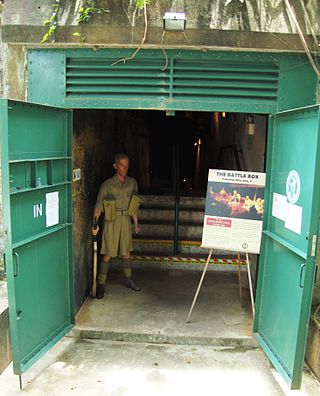
The Battle Box is the popular name of the Fort Canning Bunker, formerly known as Headquarters Malaya Command Operations Bunker, constructed under Fort Canning Hill, Singapore, as an emergency, bomb-proof command centre during the Malayan Campaign and the Battle of Singapore. The Battle Box is currently a museum and tourist attraction.
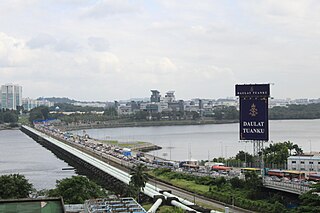
The Johor–Singapore Causeway is a 1.056-kilometre (0.66 mi) causeway consisting of a combined railway and motorway crossing that links the city of Johor Bahru in Malaysia across the Straits of Johor to the district and town of Woodlands in Singapore. It was the only land connection between the two from 1928 until 1998, when the Tuas Second Link opened.

Wong Peng Soon, was a Malayan/Singaporean badminton player who reigned as a top player in Malaya from the 1930s to the 1950s when it was a single nation. Noted for his smooth but powerful strokes and graceful footwork, he won the singles title seven times in Singapore and eight times in Malaya during this period, as well as being the top player in the All England, the Danish Open, the Indian and Philippines championships to name a few.

His Majesty's Naval Base, Singapore, also Her Majesty's Naval Base, Singapore, alternatively known as the Singapore Naval Base, Sembawang Naval Base and HMS Sembawang, was situated in Sembawang at the northern tip of Singapore and was both a Royal Navy shore establishment and a cornerstone of British defence policy in the Far East between the World Wars. From 1921 to 1941 it was a China Station base, from 1941 to 1945 a repair facility for the Imperial Japanese Navy and from 1945 to 1958 a Far East Fleet base. Today, it is a commercial dockyard but British military activity still exists at the British Defence Singapore Support Unit (BDSSU).
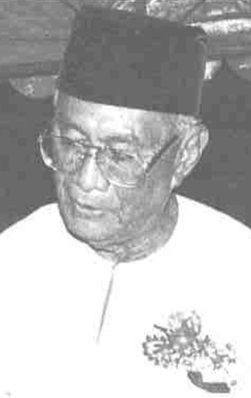
Tun Dr. Awang bin Hassan was a Malaysian politician who served as the 5th Yang di-Pertua Negeri (Governor) of Penang from 1981 until his retirement in 1989. He had previously served as the 7th Malaysian High Commissioner to Australia from 1973 to 1980.
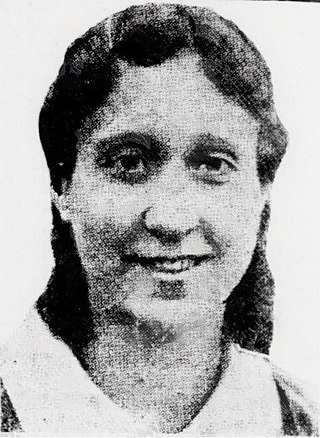
Alice Edith Wilhelmina Pennefather was a Singaporean sportwoman who excelled in various sports such as badminton, field hockey, netball, and tennis. In 2016, she was inducted into the Singapore Women's Hall of Fame, maintained by the Singapore Council of Women's Organisations.

Wilfred Lawson Blythe was a British colonial administrator who served as the second Colonial Secretary of Singapore from 30 June 1950 to 30 July 1953.

Brigadier Sir Patrick Alexander Bruce McKerron, known as Patrick McKerron was a British Army officer and colonial administrator. He joined the Malayan Civil Service in 1920 as Assistant Superintendent before retiring as Colonial Secretary of Singapore in 1950.
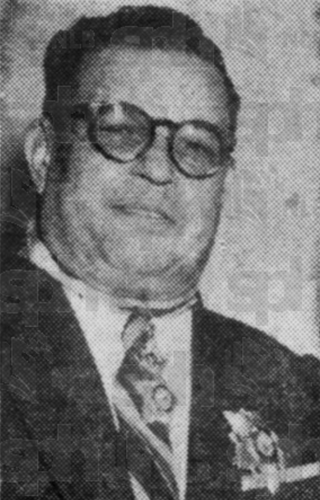
Dato Charles Joseph Pemberton Paglar was a Singaporean surgeon, gynaecologist, politician, philanthropist, and leader of the Eurasian community of Singapore. He was the personal physician and a close friend of Sultan Ibrahim of Johor. During the Japanese occupation, he was appointed the head of the Eurasian Welfare Association, which had been established by the Japanese. This led to his indictment of treason by the British following the end of the occupation. However, the case was later withdrawn and he was acquitted of all charges.

Boustead Institute was a building located at the junction of Tanjong Pagar Road and Anson Road in Singapore which initially served as a hostel for seamen. It later housed the Toby's Paradise bar, and was demolished in the 1970s.
William Stanley Reeve-Tucker CBE was a rubber planter in Malaya and a member of the Federal Council.

John Arthur Stewart Jennings was the editor of the Times of Malaya, the first newspaper in Ipoh, and the sole proprietor of Times of Malaya Press, Ltd.

Cecil Robbins Cherry was the Eastern head of Boustead & Co. and the chairman of the Singapore Chamber of Commerce. He served as the chamber's representative on the Legislative Council of the Straits Settlements.
References
- 1 2 3 4 5 Tan, Bonny. "Early Tourist Guidebooks: Willis' Singapore Guide (1936)". BiblioAsia. National Library Board . Retrieved 22 May 2024.
- 1 2 "WILLIS'S GUIDE TO SINGAPORE". The Singapore Free Press . Singapore. 21 June 1938. Retrieved 22 May 2024.
- ↑ "A NEW GUIDE". The Malaya Tribune. Singapore. 30 May 1934. Retrieved 22 May 2024.
- ↑ "Guide To Singapore". The Malaya Tribune. Singapore. 14 February 1935. Retrieved 22 May 2024.
- ↑ "Willis's New Guide". The Malaya Tribune. Singapore. 17 January 1936. Retrieved 22 May 2024.
- ↑ "WILLIS' GUIDE". The Straits Times . Singapore. 17 January 1936. Retrieved 22 May 2024.
- ↑ "SINGAPORE GUIDE". The Straits Budget . Singapore. 25 February 1937. Retrieved 22 May 2024.
- ↑ "THE SIGHTS— FOR SEAMEN". The Straits Times . Singapore. 7 April 1939. Retrieved 22 May 2024.